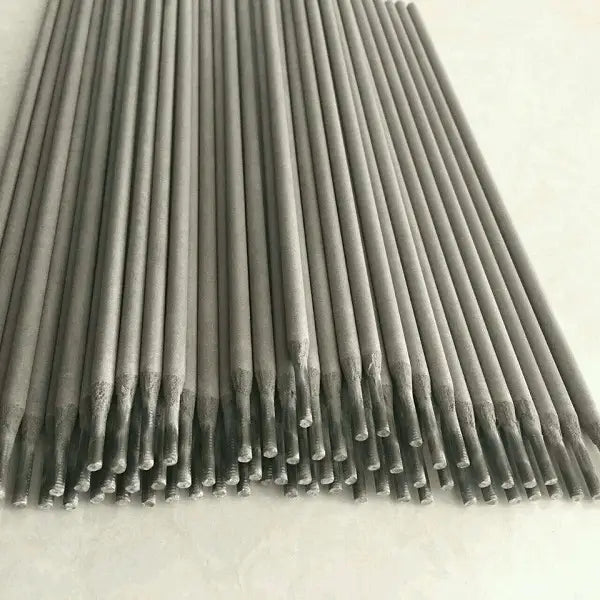1. Welding Rod

1. Precautions
(1) To properly store welding rods, ensure adequate ventilation and dryness in the warehouse. Maintain relative humidity below 60%. When stacking, keep a distance of 30 cm from the ground and walls.
(2) Properly label and store electrodes according to their model and specifications, avoiding any mixing of different types.
(3) Handle and stack welding rods carefully to avoid damaging their coating. Pay extra attention to electrodes with weaker coatings, such as stainless steel, surface and cast iron electrodes. Do not stack welding electrodes too high.
Related Reading: How to Choose the Right Welding Rod?
2. The welding rod is affected by moisture
After the electrode becomes wet, the color of the coating typically darkens. The electrode also loses its clear metallic sound upon impact and some even develop a white alkaline residue, known as “white bloom”.
Influence of the wet electrode on the welding process:
(1) The arc is unstable, the spatter has increased, and the particles are very large.
(2) Deep fusion, which is easy to chip.
(3) Poor slag coverage and uneven welding seam.
(4) Slag removal is challenging.
Influence of wet electrode on welding quality:
(1) Welding cracks and pores are easily caused, especially with alkaline electrodes.
(2) The value of mechanical properties is easily reduced.
3. Drying the electrode
(1) Welding electrodes that have been stored for a long period of time are susceptible to moisture.
However, if the rods are free from rust and the coating remains intact, their original performance can be preserved after drying without affecting their usability.
(2) The cooking temperature must be maintained at a suitable level, neither too high nor too low. If the temperature is too low, it will not be able to remove the moisture, but if it is too high, it can cause the coating to crack, become brittle, fall off or undergo changes in its composition, which can negatively impact welding. quality.
(3) The dry alkaline electrode should not be left exposed for more than 4 hours.
(4) The electrode should not be subjected to many repeated drying cycles, as this can easily cause the coating to fall off.
4. Electrode disposal
The welding core developed rust and the coating adhered, peeled off and was severely affected by moisture (especially in the case of low hydrogen type welding rod, heat resistant steel welding rod and low temperature steel welding rod).
These welding rods can no longer be used and must be discarded.
2. Welding wire

1. Precautions
(1) Welding wires must be stored in a warehouse designated for welding material, ensuring adequate ventilation and drying. Relative air humidity must be kept below 60%. When stacking, keep the wires 30cm away from the floor and walls.
(2) Ensure the correct labeling and storage of different models and specifications of welding wires, avoiding mixing them.
(3) Handle welding wire bundles carefully to avoid damage. Avoid throwing garbage during handling. Any damage to the packaging may result in moisture absorption and rusting of the welding wire.
(4) When handling cored welding wires, avoid rolling the container and make sure it is not placed on the floor or tilted. This will prevent tangling of the welding wire inside the cylinder and ensure proper use.
(5) Avoid stacking welding wires too high.
(6) Flux-cored wires do not need to be dried and should be used as soon as possible after opening. If the welding wire is not exhausted and needs to be stored in the wire feeder overnight, cover it with tarp, plastic cloth or other materials to reduce exposure to moisture in the air.
(7) Use only pure anhydrous CO2 gas for flux-cored welding wires.
2. Welding wire is affected by moisture
Moisture-absorbing welding wire can increase the amount of hydrogen diffused into the deposited metal, resulting in defects such as cavities and pores. This can also negatively impact the performance of the welding process and the mechanical properties of the welded metal, leading to serious cracking problems.
3. Flux for submerged arc welding

Flux is typically packaged in bags and must be handled carefully during transportation to avoid damage to the packaging.
It is important to store the flux in a dry place to prevent moisture from affecting the quality of the soldering. The ideal ambient temperature is between 5-50°C, and it should not be stored in an environment with high temperatures and humidity.
Before using the flux, it must be cooked according to the instructions in the manual.
When baking the fondant, it should be spread evenly on a plate and the maximum thickness should not exceed 50mm.

























































